This was the lead paragraph in a recent Florida newspaper article. These accidents can and do happen--and yet they need not.
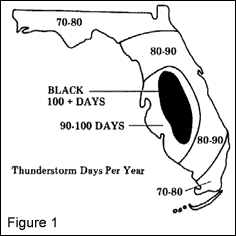 Florida has more thunderstorms--and thus, more lightning strikes--than
any other state (see Figure 1). Only three states have a higher
death rate from lightning than Florida, and no state has more
deaths or injuries.
Florida has more thunderstorms--and thus, more lightning strikes--than
any other state (see Figure 1). Only three states have a higher
death rate from lightning than Florida, and no state has more
deaths or injuries.
Florida averages more than ten deaths and thirty injuries from lightning per year. Approximately fifty percent of the deaths and injuries occur to individuals involved in recreational activities, and nearly forty percent of those are water-related: boating, swimming, surfing, and others.
Those who enjoy Florida's waters certainly should understand the phenomena of thunderstorms--lightning and the precautions to take in order to keep these activities pleasurable--and how to prevent tragedy.
LIGHTNING PHENOMENA  The upper portion of the cloud develops a positive electrical
charge, the lower level a negative electrical charge. The
air, because it is a poor conductor of electricity, restricts
the regular flow of electricity between these, attracting
electrical charges.
The upper portion of the cloud develops a positive electrical
charge, the lower level a negative electrical charge. The
air, because it is a poor conductor of electricity, restricts
the regular flow of electricity between these, attracting
electrical charges.
While this phenomenon is occurring in the clouds, a similar phenomenon is occurring on the surface.
Negative charges repel negative charges and attract positive charges. So, as a thunder cloud passes overhead, a concentration of positive charges accumulates in and on all objects below the cloud. Since these positive charges are attempting to reach the negative charge of the cloud, they tend to accumulate at the top of the highest object around. On a boat that may be the radio antenna, the mast, a fishing rod, or even you! The better the contact an object has with the water, the more easily these positive charges can enter the object and race upward toward the negative charge in the bottom of the cloud.
Lightning occurs when the difference between the positive and negative charges, the electrical potential, becomes great enough to overcome the resistance of the insulating air and to overcome the resistance of the insulating air and to force a conductive path between the positive and negative charges. This potential may be as much as 100 million volts. To help you understand the magnitude of this voltage, the voltage needed in an automobile to cause a spark plug to fire is only 15 to 200 volts! And the spark plug gap is but a fraction of an inch!
Lightning strikes represent a flow of current from negative to positive, in most cases, and may move from the bottom to the top of a cloud, from cloud to cloud, or most-feared, from cloud to ground (see Figure 3). And when the lightning does strike, it will most often strike the highest object in the immediate area. On a body of water, that highest object is a boat. Once it strikes the boat, the electrical charge is going to take the most direct route to the water where the electrical charge will dissipate in all directions.
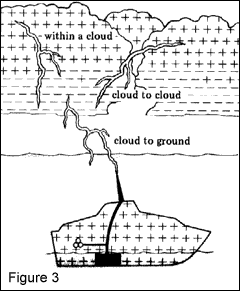 Let's consider a few possibilities. Lightning strikes the
ungrounded radio antenna on your boat. The metal antenna carries
the electrical charge to the radio, which does not have a
good conductor to the water. Your hand is on the radio, or
on metal connected to the radio. Your feet are on a wet surface,
which is in contact with metal which extends through the hull
of the boat to the water. Your body may then become the best
conductor for the electrical charge.
Let's consider a few possibilities. Lightning strikes the
ungrounded radio antenna on your boat. The metal antenna carries
the electrical charge to the radio, which does not have a
good conductor to the water. Your hand is on the radio, or
on metal connected to the radio. Your feet are on a wet surface,
which is in contact with metal which extends through the hull
of the boat to the water. Your body may then become the best
conductor for the electrical charge.
A second example is a sailboat. Lightning strikes the mast. The electrical current follows the mast or wire rope to your hands, through your body to the wet surface, and then through the hull to the water.
Or, while operating a motor boat, the lightning strikes you, passes through your body to the motor, and then to the water.
Or, sitting in your aluminum or fiberglass rowboat, you are holding a graphite (a good electrical conductor) fishing rod. The rod is struck by lightning. The electrical charge passes through the rod, your body, then to the boat to the water.
In all four examples you could be seriously injured. You could be dead.
You need not even be in contact with the components of the boat struck by lightning. Unless the components of the boat which could conduct electricity are bonded together and are adequately grounded, there could be side flashes. A side flash occurs when the electrical charge jumps from one component to another seeking a better path to ground. You might be that "better path."
MINIMIZE LIGHTNING STRIKE DAMAGE
Watch for the development of large well-defined rising cumulus clouds. Once they reach 30,000 feet the thunderstorm is generally developing. Now is the time to head for shore. As the clouds become darker and more anvil-shaped, the thunderstorm is already in progress.
Watch for distant lighting. Listen for distant thunder. You may hear the thunder before you can see the lightning on a bright day. Seldom will you hear thunder more than five miles from its source. That thunder was caused by lightning 25 seconds earlier. The sound of thunder travels at one mile per five seconds (see Figure 4).
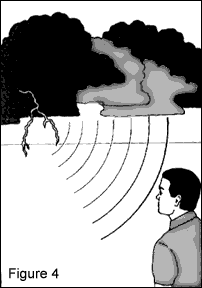 You are two miles from shore. The thunderstorm which is now
five miles away is traveling in your direction at 20 miles
per hour, which means it could be overhead within 15 minutes.
Can you reach shore--two miles away--and seek shelter within
that time? You better move!
You are two miles from shore. The thunderstorm which is now
five miles away is traveling in your direction at 20 miles
per hour, which means it could be overhead within 15 minutes.
Can you reach shore--two miles away--and seek shelter within
that time? You better move!
LIGHTNING-PROTECTED BOATS
But small boats are seldom made of metal. Their wood and fiberglass construction do not provide the automatic grounding protection offered by metal-hulled craft. Therefore, when lightning strikes a small boat, the electrical current is searching any route to ground and the human body is an excellent conductor of electricity!
Today's fiberglass-constructed small boats, especially sailboats, are particularly vulnerable to lightning strikes since any projection above the flat surface of the water acts as a potential lightning rod. In many cases, the small boat operator or casual weekend sailor is not aware of this vulnerability to the hazards of lightning. These boats can be protected from lightning strikes by properly designed and connected systems of lightning protection. However, the majority of these boats are not so equipped.
Lightning protection systems do not prevent lightning strikes. They may, in fact, increase the possibilities of the boat being struck. The purpose of lightning protection is to reduce the damage to the boat and the possibility of injuries or death to the passengers from a lightning strike.
If you are considering the purchase of a new or used boat, determine if it is equipped with a properly designed and installed lightning protection system. Such a system is generally more effective and less costly than a system installed on a boat after it has been constructed.
LIGHTNING PROTECTION SYSTEM The major components of a lightning protection system for a
boat are an air terminal, main conductor, and a ground plate.
Secondary components are secondary conductors, lightning arrestors,
lightning protective gaps, and connectors (see Figure 5).
The major components of a lightning protection system for a
boat are an air terminal, main conductor, and a ground plate.
Secondary components are secondary conductors, lightning arrestors,
lightning protective gaps, and connectors (see Figure 5).
The mast, if constructed of conductive material, a conductor securely fastened to the mast and extending six inches above the mast and terminating in a receiving point, or a radio antenna can serve as the air terminal.
The main conductor carries the electrical current to the ground. Flexible, insulated compact-stranded, concentric-lay-stranded or solid copper ribbon (20- gauge minimum) should be used as the main conductor.
The ground plate, and that portion of the conductor in contact with the water, should be copper, monel or navel bronze. Other metals are too corrosive. The secondary conductors ground major metal components of the boat to the main conductor. However, the engine should be grounded directly to the ground plate.
Lightning arrestors and lightning protective gaps are used to protect radios and other electronic equipment which are subject to electrical surges.
The connectors must be able to carry as much electrical current as other components of the system. Further, the connections must be secure and noncorrosive.
On a large power boat or sailboat, a properly designed and grounded antenna could provide a cone of protection. Presently, however, the vast majority of the radio antenna is totally unsuitable for lightning protection. This is also true of the wires feeding the antenna. If the antenna is not properly grounded, it may result in injury or death and cause considerable property damage.
Sailboats with portable masts, or those with the mast mounted on the cabin roof, are particularly vulnerable as they are usually the least protected as far as grounding or bonding is concerned.
Ideally, an effective ground plate should be installed on the outside of all boats when the hulls are constructed. Unfortunately, this is not often done. Such a ground plate would help manufacturers design safer lightning protection systems for the boats.
LIGHTNING PROTECTION CODE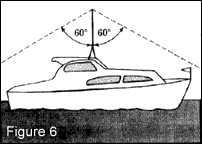 The National Fire Protection Association, Lightning Protection
Code, suggests a number of ways in which the boater can protect
his boat and minimize damage if the boat is struck or is in
the vicinity of a lightning strike. These suggestions are summarized
below:
The National Fire Protection Association, Lightning Protection
Code, suggests a number of ways in which the boater can protect
his boat and minimize damage if the boat is struck or is in
the vicinity of a lightning strike. These suggestions are summarized
below:
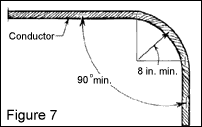
WHEN CAUGHT IN A STORM
SUMMARY
ACKNOWLEDGEMENT
William J. Becker, Professor and Extension Safety Specialist,
Agricultural Engineering Department, Cooperative Extension
Service, Institute of Food
Publication #: SGEB-7 October 1992
Disclaimer and Reproduction Information: Information in NASD does not represent NIOSH policy. Information included in NASD appears by permission of the author and/or copyright holder. More